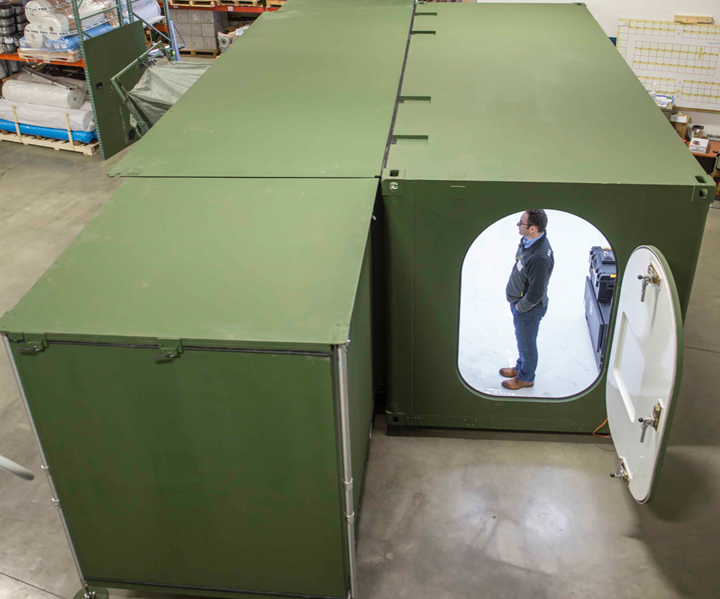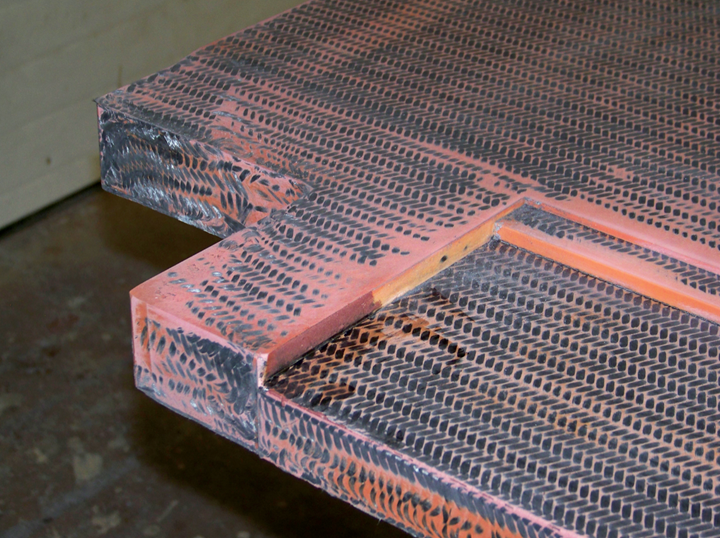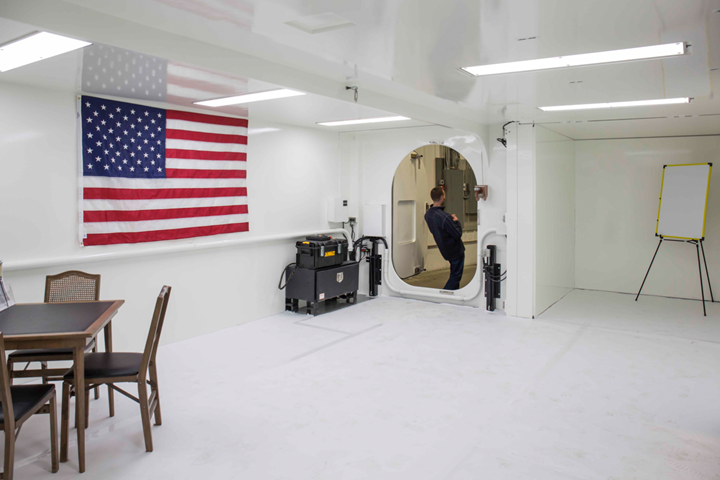Protecting those who protect us
Core Composites unveils all-composite military shelter.

The Joint Warfighter Shelter of the Future (JWSOF) is a next-generation surgical shelter that expands via a series of lightweight composite expanding walls, roofs and floors. Source | Core Composites
As we celebrate the 4th day of National Composites week, the theme of the day is “how composites protect us.” One important role composites play is supporting the defense sector in numerous applications ranging from military aircraft to body armor and many others. Core Composites (Bristol, R.I., U.S.), a division of ROM Development Corporation recently launched an all-composite military shelter that falls in this category.
The company’s all-composite Joint Warfighter Shelter of the Future (JWSOF) is funded by the U.S. Army Medical Command (San Antonio, Texas, U.S.). The JWSOF is a next-generation surgical, rigid wall shelter with an exterior of a 20-foot ISO shipping container that expands via a series of light weight composite expanding walls, roofs and floors.

The fully expanded JWSOF. Source | Core Composites
Core Composites says the shelter is stiffer, stronger, 41% larger, and 25% lighter compared to the legacy aluminum-built shelters. The composite system is carbon fiber fabric, fire retardant resin, PET foam core and multi-side infusion manufacturing process. Core Composites used A&P Technology’s (Cincinnati, Ohio, U.S.) QISO carbon fabric for the project.

The shelter’s carbon fiber structure in development. Source | Core Composites

The shelter’s exposed carbon fiber structure. Source | Core Composites
The JWSOF Shelter can be both air conditioned and heated, and has an insulation R-value of 8-9. The shelter can be set up or taken down in less than 30 minutes with two men and limited tools. Built with lightweight composite materials, the JWSOF will last indefinitely with very low maintenance. It can be helicopter lifted for fast evacuation if needed and carries all equipment required to support two surgical units operating at the same time. It is also corrosion-resistant, which provides a cleaner more sterile environment for fast wash down in chemical attack scenarios.

The interior of the expanded JWSOF. Source | Core Composites
The JWSOF meets all of the Governments requirements including the new International Shipping Organization (ISO) requirement to be able to handle 9 high stacking in a commercial container ship.
The program was a two-year development effort involving a number of highly skilled Rhode Island companies. Ben Cornell, General Manager of Core Composites spoke about the collaboration:
“This collaboration is a testament to the way talented and like-minded companies can come together and leverage each other’s core competencies to develop innovative concepts that solve complex problems, and it is particularly exciting to join forces with other R.I. organizations. There is an incredible opportunity to bring new and better solutions to the forefront and help our armed forces stay competitive on a global scale. Working together, I am confident we can support the U.S. military as whole to innovate with composites and solve their most pressing needs.”
Core Composites most recently relocated the Shelter to Aberdeen Proving Ground Army Base (Aberdeen, Maryland, U.S.) for further testing of the composite materials and the structural integrity under various stressors and simulated environments.
Related Content
-
From the CW Archives: Airbus A400M cargo door
The inaugural CW From the Archives revisits Sara Black’s 2007 story on out-of-autoclave infusion used to fabricate the massive composite upper cargo door for the Airbus A400M military airlifter.
-
CompPair adds swift prepreg line to HealTech Standard product family
The HealTech Standard product family from CompPair has been expanded with the addition of CS02, a swift prepreg line.
-
Composite resins price change report
CW’s running summary of resin price change announcements from major material suppliers that serve the composites manufacturing industry.
















